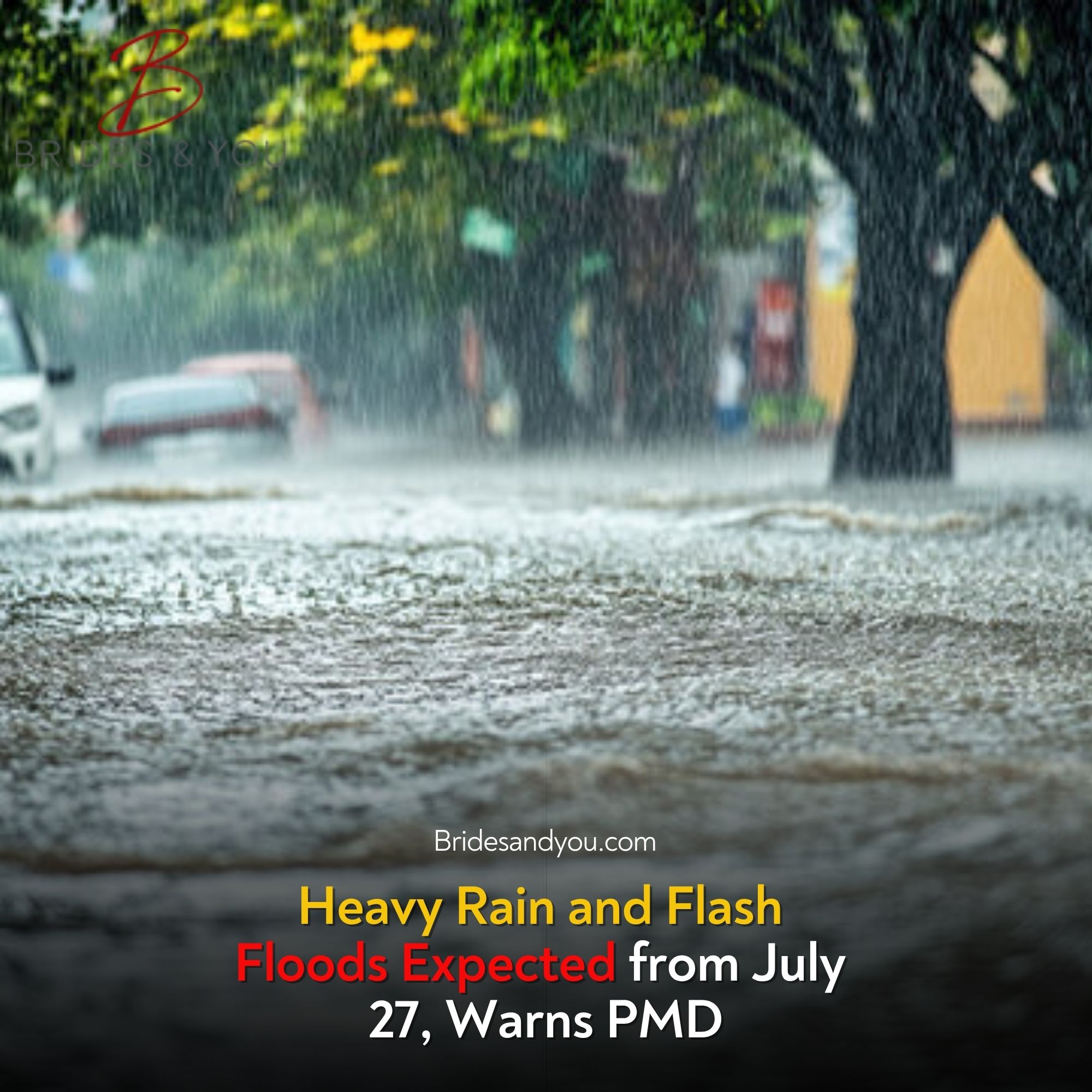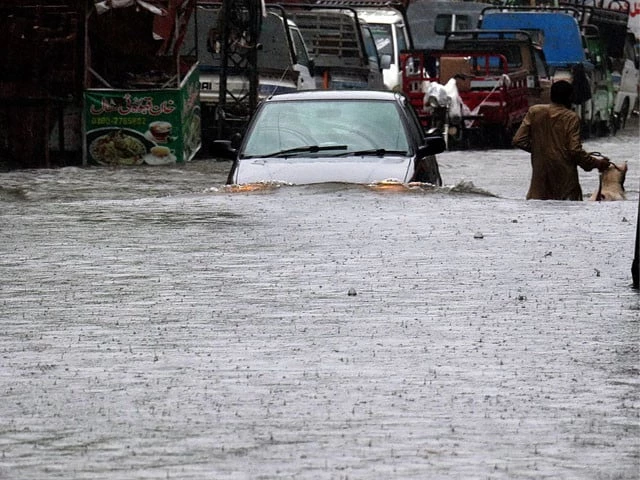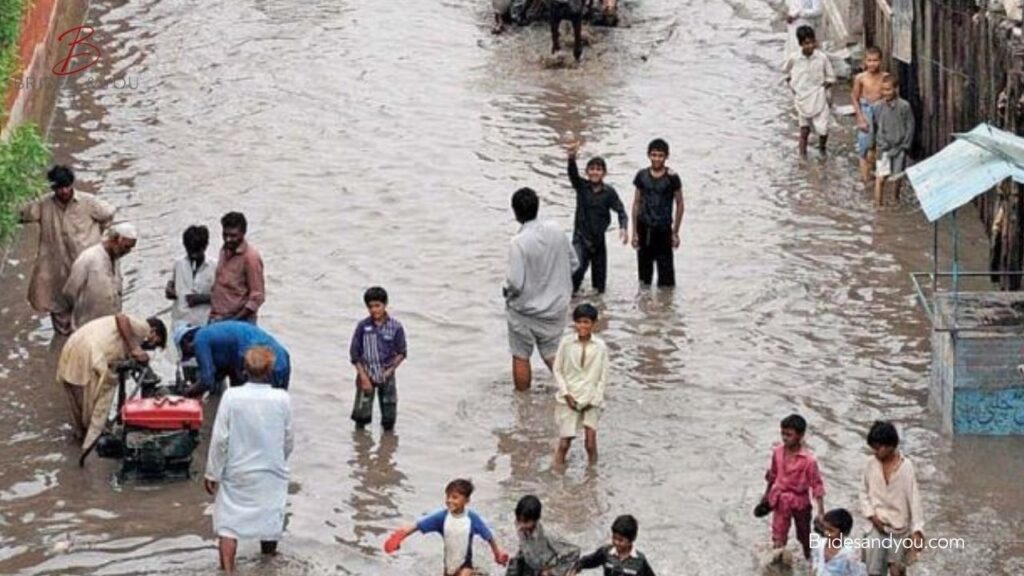Now Reading: Rain and Flash Floods Forecast in Pakistan: Stay Safe from July 27-31, 2025
-
01
Rain and Flash Floods Forecast in Pakistan: Stay Safe from July 27-31, 2025
Rain and Flash Floods Forecast in Pakistan: Stay Safe from July 27-31, 2025

Pakistan is gearing up for heavy rainfall and potential flash floods from July 27 to 31, 2025, according to the Pakistan Meteorological Department (PMD). The weather department has issued warnings about strong winds, lightning, and heavy rain that could affect many parts of the country. Let’s dive into what this forecast means, which areas are at risk, and how you can stay safe.
What Does the Rain and Flash Floods Forecast Say?
The PMD reports that weak monsoon currents are already moving into upper and central Pakistan. These currents will likely get stronger starting July 28. A westerly wave, arriving by July 29, will make the weather system even more intense. This combination could bring widespread rain, thunderstorms, and isolated heavy showers across multiple regions.

Why Is This Forecast Important?
Heavy rain can lead to flash floods, urban flooding, and landslides, especially in vulnerable areas. Strong winds and lightning may also damage weak structures like kacha houses, electric poles, solar panels, and billboards. Knowing the forecast helps you prepare and stay safe.
Which Areas Will Face Heavy Rainfall?
Different parts of Pakistan will experience rain and thunderstorms during this period. Here’s a breakdown of the affected regions:
Kashmir and Gilgit-Baltistan
From July 27 to 31, expect rain with isolated heavy showers in Kashmir, including Neelum Valley, Muzaffarabad, Rawalakot, and Mirpur. Gilgit-Baltistan, covering areas like Skardu, Astore, and Hunza, will also see rain during these days. Landslides are a concern in these hilly regions.
Khyber Pakhtunkhwa
Districts like Swat, Mansehra, Kohistan, and Peshawar will likely receive rain and thunderstorms from July 28 to 31. Heavy rain could trigger flash floods in hill streams, especially in Chitral and Swat.
Punjab and Islamabad
From July 28 to 31, rain with scattered heavy showers is expected in Rawalpindi, Lahore, Gujranwala, and Sialkot. Southern Punjab, including DG Khan, Bahawalpur, and Rahimyar Khan, will likely see rain from July 29 to 31. Low-lying areas in these regions face a risk of urban flooding.
Balochistan
Northeastern and southern districts, such as Quetta, Barkhan, and Zhob, may experience rain from the night of July 29 to July 31. Stay alert for changing weather conditions in these areas.
Sindh
Hot and humid weather will continue in Sindh, but rain is forecast for July 30 and 31 in districts like Tharparkar, Sanghar, Sukkur, and Larkana. Prepare for sudden changes in weather.
What Are the Risks of Heavy Rain and Flash Floods?
The PMD has highlighted several dangers that could arise from this weather system. Here’s what to watch out for:
Flash Floods in Northern Regions
Heavy rain could cause flash floods in hill streams of Chitral, Swat, and other northern areas. These sudden floods can be dangerous, especially for people living near rivers or streams.
Urban Flooding in Cities
Low-lying areas in cities like Islamabad, Lahore, Rawalpindi, and Sialkot are at risk of urban flooding. Waterlogged streets can disrupt daily life and damage property.
Landslides in Hilly Areas
Hilly regions, including Khyber Pakhtunkhwa, Gilgit-Baltistan, Murree, and Kashmir, may face landslides or mudslides. These can block roads and pose risks to travelers.
Damage from Strong Winds and Lightning
Strong winds and lightning could harm weak infrastructure, such as kacha houses, electric poles, solar panels, and billboards. Stay away from unstable structures during storms.
How to Stay Safe During the Rain and Flash Floods Forecast
The PMD urges everyone to stay informed and take precautions. Here are some simple tips to keep you and your family safe:
- Check Weather Updates: Visit the PMD website or download the Pak Weather mobile app for the latest forecasts.
- Avoid Unnecessary Travel: Stay away from flood-prone or hilly areas during heavy rain.
- Secure Your Home: Check for weak structures, like loose roofs or poles, and reinforce them if possible.
- Stay Away from Waterlogged Areas: Avoid walking or driving through flooded streets to prevent accidents.
- Follow Authorities’ Advice: Listen to local officials for evacuation or safety instructions.
Why Is Pakistan Prone to Flash Floods?
Pakistan faces extreme weather events like flash floods and landslides due to its geography and climate. The monsoon season, from July to September, brings heavy rainfall, especially in northern and central regions. Climate change has also made these events more frequent and severe, increasing risks for communities across the country.
Stay Prepared and Stay Safe
The PMD’s forecast for July 27 to 31, 2025, calls for caution across Pakistan. From heavy rain in Kashmir to urban flooding in Punjab, the risks are real. Travelers, tourists, and residents should stay updated and avoid vulnerable areas. Local authorities are on alert and ready to act, but your preparedness makes a big difference.
For the latest weather updates, check the PMD website or follow their social media. Stay safe and keep your loved ones informed!













